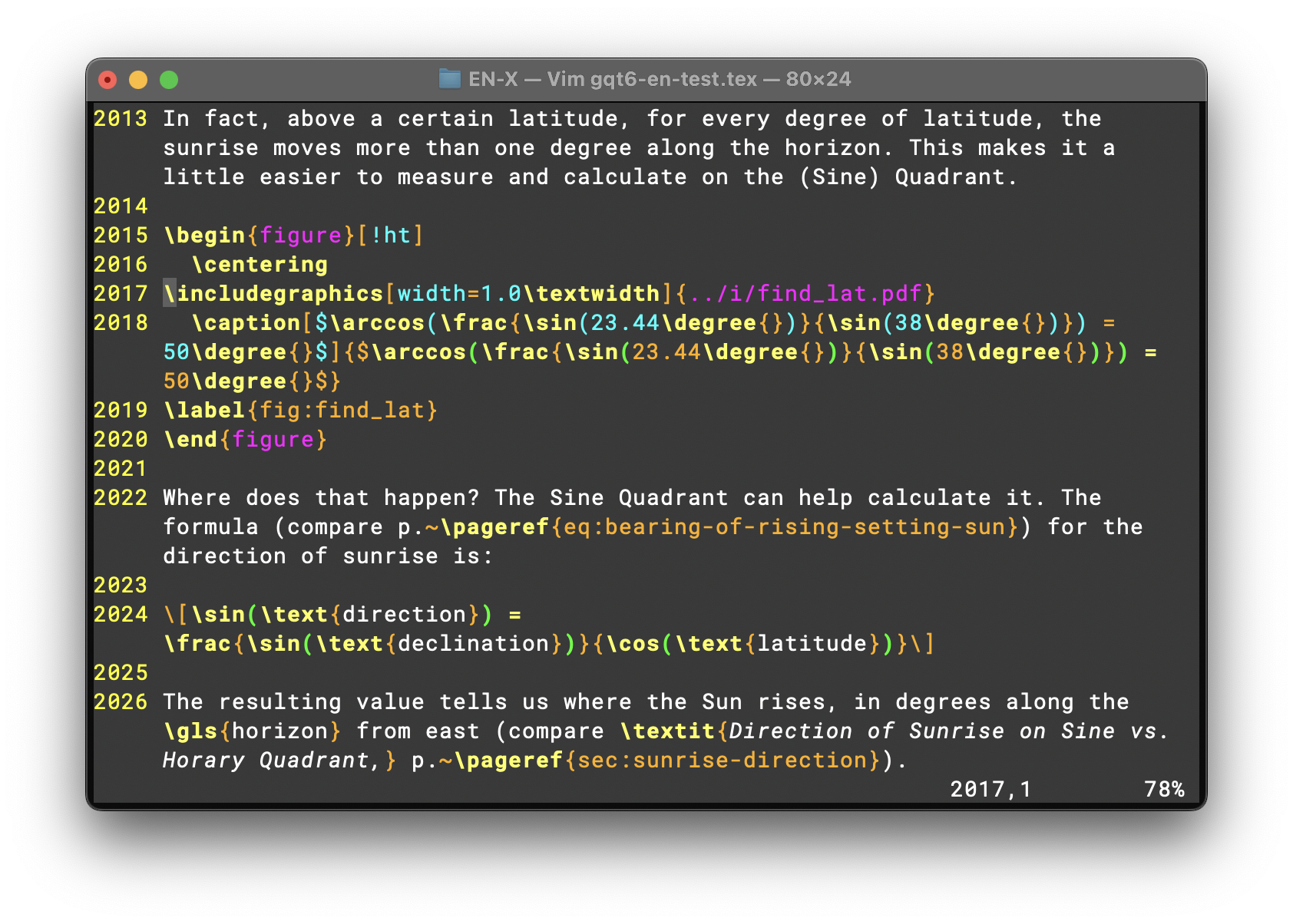Feature: An Instrument of Everything
2025-01-13
First, there was the Telemeter. Distance from angular size or spread. Easy. Then I added the Quadrant to the backside, and a whole world of metrology and civil engineering -- but also astronomy -- opened up. The Quadrant as a folded-up Astrolabe.
Use cases emerged. Can I determine --
- My latitude? Check.
- Cardinal direction? Check.
- Equal hour of day? Check.
- Solstice and equinox dates, twilight times, ... Check.
- Unequal hour of day? Check, once you have the above.
- Number of daylight hours in a day? Check, once you have the above.
- Times of sunset and rise? Check.
- My longitude? The above, plus a Chronometer...
- Accurate time of day? We need our longitude for that. And the Equation of Time for that date.
To summarize: if you have exact latitude and longitude data, you can tell the exact time. And vice versa.
Ultimately, I wanted to glance at a chronometer-compass-sun dial-eternal calendar-star chart-almanac in one instrument.
Doing this all with a Quadrant, instantly, without any prerequisite knowledge or data? No. Not instantly. After a few days at a location, yes.
Turns out, doing it all at once isn’t necessary in practice. We always do have some data, some knowledge of the location, and from there, we can derive the unknowns.
While the instrument of everything -- analogous to the theory of everything -- that can do it all, at once, would be the holy grail of observation devices, I have personally mostly given up on that idea. An all-encompassing, unified instrument doesn’t exist, and it won’t exist.
To those of you with standing inquiries and dibs on the first versions of any such device I would build: I am not out to destroy your dreams here; take this as a current-state-of-research update. I will let you know when it’s ready.
Let this not take away from the supercomputer we do have: the Latitude Quadrant, as it stands on the shoulders of a thousand years of such devices, is a veritable supercomputer, and while we are researching higher, faster, and better, it’s easy to forget the power we do already have in our hands, literally at our fingertips.
Or maybe, I can entice you to take another look at the Sine Quadrant, which can do pretty much all of the above, within the same constraints, yet so much more elegantly...
